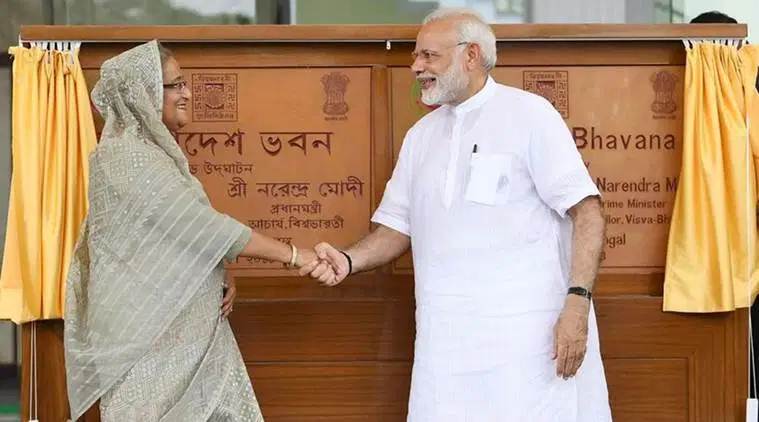Tripura’s trade volume with Bangladesh has increased by 158 per cent in the last three years, officials said Friday.
However, the bilateral trade relation is still uneven as only 30 per cent of the trade volume involves export to Bangladesh and 70 per cent of the trade comes from goods imported from the country — an issue Prime Minister Narendra Modi will take up with Bangladesh premier Sheikh Hasina on September 6.
Speaking to reporters at the state secretariat, Special Secretary for Industries and Commerce Abhishek Chandra said while the trade volume with Bangladesh used to be Rs 390.68 crore, the figures now stand at Rs. 1,008.4 crore.
However, he said some problems still exist in some sectors and those would be taken up by Modi with Hasina during her visit to New Delhi.
“There are still problems in some areas. Two Border Haats with Bangladesh were stopped during Covid and weren’t restarted. We have requested to allow movement of goods and services in these but it’s still awaiting approval. There is also some objection about an Integrated Check Post (ICP) at Muhurighat in South Tripura. PM Modi has agreed to take up these issues with the Bangladesh PM on September 6,” the official said.
Speaking on the trade deficit on the Indian side, the official said the state government has identified 26 products where the trade volume could increase but only 16 of them were permitted for export by Bangladesh. These include rubber and tea, two of the most important cash crops of Tripura, which has the potential of significantly boosting the state’s trade prospects.
“Rubber goes to Bangladesh from Petrapole-Benapole in West Bengal. If we could send it from here, it could alone boost the prospects. Our tea can be exported there with 80 per cent duty, which makes it uncompetitive in Bangladesh. That’s why our trade balance is skewed. The PM would take up different issues from northeast India with the Bangladesh premier, including issues pertaining to Tripura.”
In terms of volume, Indo-Bangla trade through six Land Customs Stations (LCS) and Integrated Check Posts in Tripura increased by Rs 14.65 crore in 2018-19, by Rs 30.34 crore in 2019-20 and Rs 16.39 crore in 2020-21.
Interestingly, while Tripura doesn’t get to export its main cash crops rubber and tea to Bangladesh, the highest export volume comes from wheat, which isn’t even grown in a major way in the state. Tripura is used as an export corridor for the product instead of a growing region.
The Industries and Commerce Special Secretary also said as a part of the sectoral development, the Indo-Bangla friendship bridge on River Feni would be inaugurated on September 9. The bridge will grant access to Chittagong Port in Bangladesh and boost trade volume.
He also said while a trial run was done with Mongla port in Bangladesh recently, the services would now need to be made more regular.
On a different front, the official said Tripura’s industrial prospects hold a bright future with 81 Memorandums of Understanding (MoUs) signed with different companies in an industrial summit last year.
However, many industrial estates, including factories at Bodhjungnanagar, the largest industrial estate of Tripura, don’t have good power and road connectivity. The government has decided to upgrade power and road connectivity in these estates, for which a proposal involving Rs 35 crore was approved in-principle by the central government.


